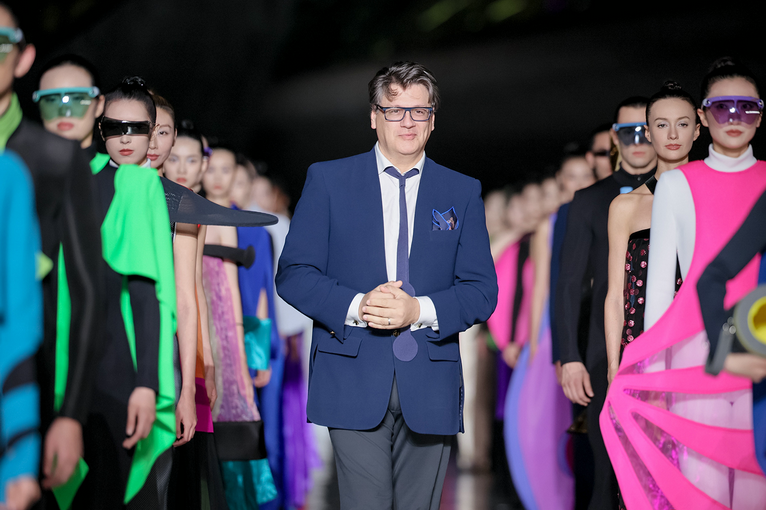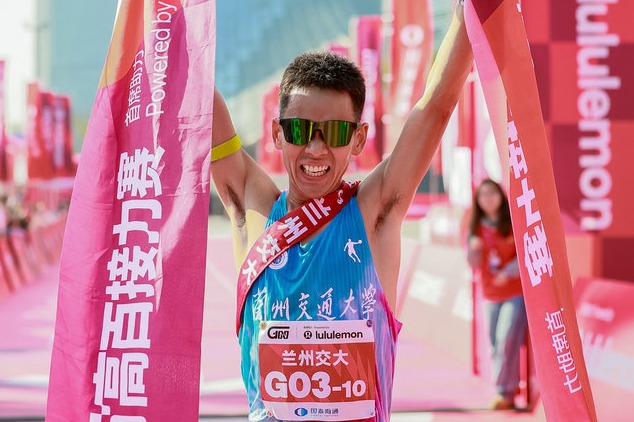Flush with ideas


At the end of November 2017, Xi made another comment on the "toilet revolution", saying that China should continue to upgrade the country's toilets so as to develop domestic tourism and improve people's quality of life.
Another three-year plan by the government shows that China aims to install 47,000 toilets and renovate 17,000 from 2018 to 2020.
In 2018, 24,000 toilets were built or upgraded in tourist destinations, including 15,000 in less-developed central and western areas.
In 2019, the goal is 21,000.
Besides tourism, toilets are closely related to people's quality of life, especially in the poor rural areas, where people have no sanitary toilets.
Before the "toilet revolution", the Chinese government had spent a total of 8.27 billion yuan building toilets in the poorest parts of the country from 2004 to 2013, in a bid to improve the living environment for the country's 600 million rural people.
By the end of 2015, about 75 percent of rural homes had flush toilets or dry toilets of at least 2 square meters that had walls, roofs, doors, windows, and underground storage tanks.
In the Yangzhuang village, Caiji town, Suqian, Jiangsu province, since 2015, dry toilets that farmers used to build behind their houses or beside pigsties have been forbidden.
Instead, the village has built sewage systems that connect every house installed with flush toilets.
There are also public bathrooms. The sludge will be collected and dealt with in a sewage treatment plant in the town.
"It's more sanitary and cleaner, without flies, maggots or unpleasant odors," 50-year-old villager Zhang Meixiang says.
"We also won't be worried that little kids will fall into storage tanks or open pigsties with a manure mixture of human and pig waste."
Still a long way ahead
Although having made huge progress, China still has a long way to go.
World Environment magazine reported in 2018 that, in China, 30 percent of farmers' homes have not been equipped with hygienic toilets, according to the contest's website, rttc-china.org.
Globally, 2.5 billion people still have no basic sanitary infrastructure, the report says.
As of now about 820 million people still defecate in the open according to statistics by the United Nations, and every year, on average 1.5 million children die of diarrhea, the magazine reports.
The most commonly used toilets are still flush toilets that were developed into the modern style in 1775. Even for those that are designed to save water, flush toilets still consume one to three liters water to flush urine, and three to six liters to wash away feces.
However, in poor rural areas where there is no sewage system or running water, it is difficult to use conventional flush toilets.
Nevertheless, installing toilets is just the start. What matters more is maintaining them, and how to manage human waste, such as storage, collection, transportation, treatment, discharge or reuse.
For example, Li says, the treatment of ammonia in human urine is to turn it into nitrogen. However, we also need a lot of urea to grow plants, so we have to turn nitrogen from the air into ammonia. That is to say, we waste a lot of energy during the two processes and emit a lot of greenhouse gases.
That is why it matters so much to "reinvent" the toilet, Li says.
The latest Reinvent the Toilet Challenge-China called for the solution of water-independent toilet systems.
So, the ideal toilets should not need to connect with a sewage system. They should be able to treat human waste properly so that the residue will be harmless to the environment, and they should be able to recycle water, collect nutrients in urine and produce fertilizer or energy. Besides, they should be independent of running water or the power grid.
The winning comfort
The design, Mi Tian Gong, by Shi, Di and Li can reduce the consumption of water, recycle water, nitrogen, phosphorus and potassium in urine, and produce electricity from fermented feces.
Water can be reused to flush the toilets. Nitrogen, phosphorus and potassium can be used to fertilize soil, and so can the remains of the fermented feces.
Electricity generated can be used to light and heat the bathroom, and maintain the temperature of the septic tanks.
The vacuum urine diversion toilet in the Mi Tian Gong system can reduce the consumption of flushing water to 0.1 liter for urination and 1 liter for defecation, each time.
To make the toilets more comfortable, Di, after simulating the air flow on a computer, designed exhaust outlets in specific locations to control the odor and reduce it to as little as possible.
Many toilets have exhaust outlets on the roof.
However, when the fans try to draw odor from the lower position up, it often makes the odor worse, so the outlets should be closer to the ground, Di says.
For the team, the system can be used in rural areas and mountainous regions, "where it is difficult to build costly sewage systems and the treatment plants", Shi says.
"It's also easy to monitor," he says.
Human waste takes up only 1 percent of domestic wastewater, but contributes 80 percent of nitrogen, 50 percent of phosphorus and 90 percent of potassium to it, he says, citing some research he's read on the matter.
"So, it would mean a lot if we can recycle phosphorus from urine, since phosphorus is not a renewable resource," Shi says.
"In 100 years or so, phosphorites around the world will be exhausted."




































